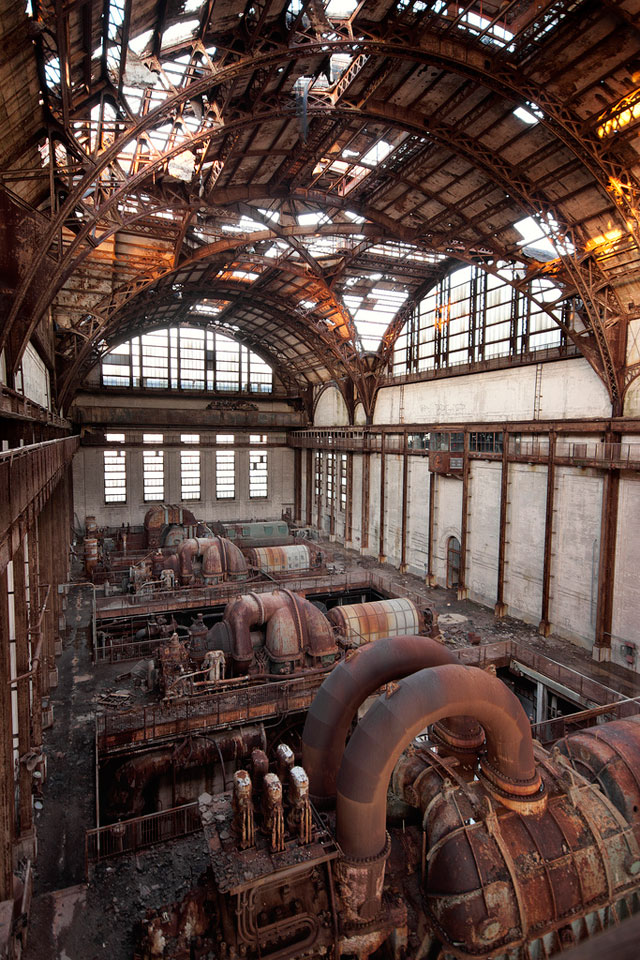Post-apocalyptic art
There is an alluring, dark aesthetic in pictures of ruins and urban decay, as we’ve explored in the ruin photography post. But there is something especially thrilling about contemplating views of well-known landmarks or even entire modern cityscapes in an advanced state of degradation and ruin, and it is this particular appetite that post-apocalyptic art often caters to.
Indeed, that’s one of the subtle but important differences between disaster movies and post-apocalyptic films. The money shots in a catastrophe movie are always the gleeful demolition of famous buildings monuments – indulging in the frisson of destruction. But in a narrative set after a civilisation-toppling catastrophe you need the recognisable features still visible in the background to provide viewers with context to the scene. The goal of the visuals is to deliver an uncomfortable feeling from the incongruity of the familiar landmark and the new world order around it. This means that in apocalyptic films the familiar landmarks are the first to be destroyed; but in post-apocalptic movies they are all that remains. (With perhaps Planet of the Apes being the pinnacle example of this: only the hand of the statue endures).





 Here is my selection of the best post-apocalyptic movies, and other films that focus on the themes covered in
Here is my selection of the best post-apocalyptic movies, and other films that focus on the themes covered in  To help get yourself into the mood for the end of the world as we know it, you can’t go far wrong with some of these albums – the very best post-apocalyptic music. These provided the soundtrack within my work bubble whilst researching and writing
To help get yourself into the mood for the end of the world as we know it, you can’t go far wrong with some of these albums – the very best post-apocalyptic music. These provided the soundtrack within my work bubble whilst researching and writing 

 There’s a great selection of apps for both iOS and Android smartphones and tablets that you can use to further explore the themes of The Knowledge. Many of these would remain functional and useful even if technological civilisation were ever to collapse – post apocalyptic apps – and you could pick up a portable solar panel to recharge your device indefinitely after the grid goes down and you’re away from a diesel-powered generator.
There’s a great selection of apps for both iOS and Android smartphones and tablets that you can use to further explore the themes of The Knowledge. Many of these would remain functional and useful even if technological civilisation were ever to collapse – post apocalyptic apps – and you could pick up a portable solar panel to recharge your device indefinitely after the grid goes down and you’re away from a diesel-powered generator.